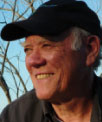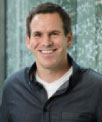New Year Editorial 2013
Curt WentrupEditor-in-Chief, Australian Journal of Chemistry, School of Chemistry and Molecular Biosciences, The University of Queensland, Brisbane, Qld 4072, Australia. Email: wentrup@uq.edu.au

Curt Wentrup was educated at the University of Copenhagen (Cand. Scient. 1966; D.Sc. 1976) and the Australian National University (Ph.D. 1969). After post-doctoral periods with Hans Dahn (Lausanne), W. M. Jones (Gainesville, FL), and Maitland Jones, Jr (Princeton), he held an assistant professorship at the Université de Lausanne, Switzerland, and a professorship at the Universität Marburg, Germany, before returning to Australia in 1985 as Professor and chair of organic chemistry and head of the organic chemistry section at the University of Queensland, where he is now Emeritus Professor. Since 2008 he is editor-in-chief of the Australian Journal of Chemistry, and since 2009 chair of the National Committee for Chemistry of the Australian Academy of Science. He is a Fellow of the Australian Academy of Science and has published over 300 research papers. His interests are in the fields of both experimental and computational chemistry of reactive intermediates and unusual molecules using photochemistry, flash vacuum thermolysis, and microwave-induced chemical reactions, in particular chemistry of nitrenes, carbenes, nitrile ylides and nitrile imines, pericyclic rearrangements of cyanates, isocyanates, thio- and isothiocyanates, and nitrile oxides and sulfides, and the chemistry of extended cumulenes. He collaborates extensively with groups in Australia and Europe and frequently holds visiting professorships in Europe. |

Professor Nicolas Voelcker, new Associate Editor. After completing his B.Sc. at the University of Saarland (1993) and his M.Sc. at the RWTH Aachen (1995) in Germany, Nico did his Ph.D. thesis (1999) in polymer surface chemistry at the German Wool Research Institute under Professor Hartwig Höcker. He received postdoctoral fellowships to work in the area of bioorganic chemistry under Professor Reza Ghadiri at the Scripps Research Institute in La Jolla, California. In 2001 he became a Lecturer at Flinders University, an Associate Professor in 2006, and a full Professor in 2008. From 2008 to 2011, he was the Associate Head of the Faculty of Science and Engineering at Flinders University. Since 2012, he is a Professor in Chemistry and Materials Science at the Mawson Institute of the University of South Australia. |
Australian Journal of Chemistry 66(1) 1-2 https://doi.org/10.1071/CH12554
Published: 21 January 2013
The Australian Journal of Chemistry enjoyed another successful year of publishing high quality research in 2012, and it was particularly pleasing that the Thomson-Reuters Impact Factor increased to a respectable 2.34. Excellent papers are received, and published, from all regions of the World. The Journal continued its tradition of publishing regular papers in all fields of chemistry as well as Research Fronts, i.e. collections of papers on particular themes, including Nanomedicine, Chemistry at the Australian Synchrotron and Artificial Photosynthesis – Energy, Nanochemistry and Governance (published as a totally free Open Access issue and based on a highly acclaimed international conference held at Lord Howe Island, with Tom Faunce, Australian National University, as the principal organiser). Additional themes were Physical and Biophysical Chemistry, Molecular Materials, a Festschrift in honour of Allan White (University of Western Australia), a Dedication to Roger Bishop (University of New South Wales), and special issues based on the International Conference on Materials for Advanced Technologies (Singapore), the Australasian Polymer Symposium (Hobart), the International [Asian] Collaborative and Cooperative Chemistry Symposium (Brisbane), the Australasian Symposium on Ionic Liquids (Clayton, Victoria), and the Eurasia-12 Conference held at Corfu, Greece.
Several important Research Fronts are in preparation for 2013, including Continuous Flow Chemistry, Metal-Organic Frameworks (Coordination Polymers), Free Radical Chemistry (the Beckwith Symposium), Chemical and Biological Conversion of Renewables to Fuels and Chemicals, Molecular Materials, the Australasian Polymer Symposium, Peptide Chemistry, Biological Mass Spectrometry, Supramolecular Crystal Engineering, Main Group Chemistry, Drug Discovery, Physical Organic Chemistry, and the 6th Heron Island Conference.
It is pleasing to note that the time from submission to publication has been brought down substantially, to as little as 60 days in favourable cases. Moreover, abstracts of papers are now published online as soon as the papers are accepted, and the full papers are published Online Early as soon as they have been copy-edited and readied for publication. The Journal is monitoring international trends in Open Access publishing closely, and in 2012 we experimented with Open Access publication of the artificial photosynthesis issue mentioned above, as well as Open Access publication of our first virtual issue, being a collection of papers authored by Nobel Prize winners and published in past issues of Aust. J. Chem. In addition, we are starting a prestigious Beckwith Review Series, which will be published Open Access. The first such review will be authored by Professor Michael (Mick) S. Sherburn (Australian National University).
The Australian Journal of Chemistry has become truly international. In keeping with this, we now have associate editors in most major regions of the World, and further expansion can be expected in the short-term. In the same vein, the Journal frequently supports conferences and symposia not only in Australia but overseas as well.
I also take this opportunity to welcome Professor Nico Voelcker as a new Associate Editor. His biographical details are indicated below. Nico fills a gap left by the resignation of Justin Gooding (UNSW), who instead joined our Editorial Advisory Board.
I extend my best wishes to you, the readers, for a happy, successful, and enjoyable New Year, and in particular I thank the authors, the reviewers, the editors, and the CSIRO publishing staff for making it possible for us to publish high quality papers in diverse fields of chemical science. I am confident this will continue in 2013.


